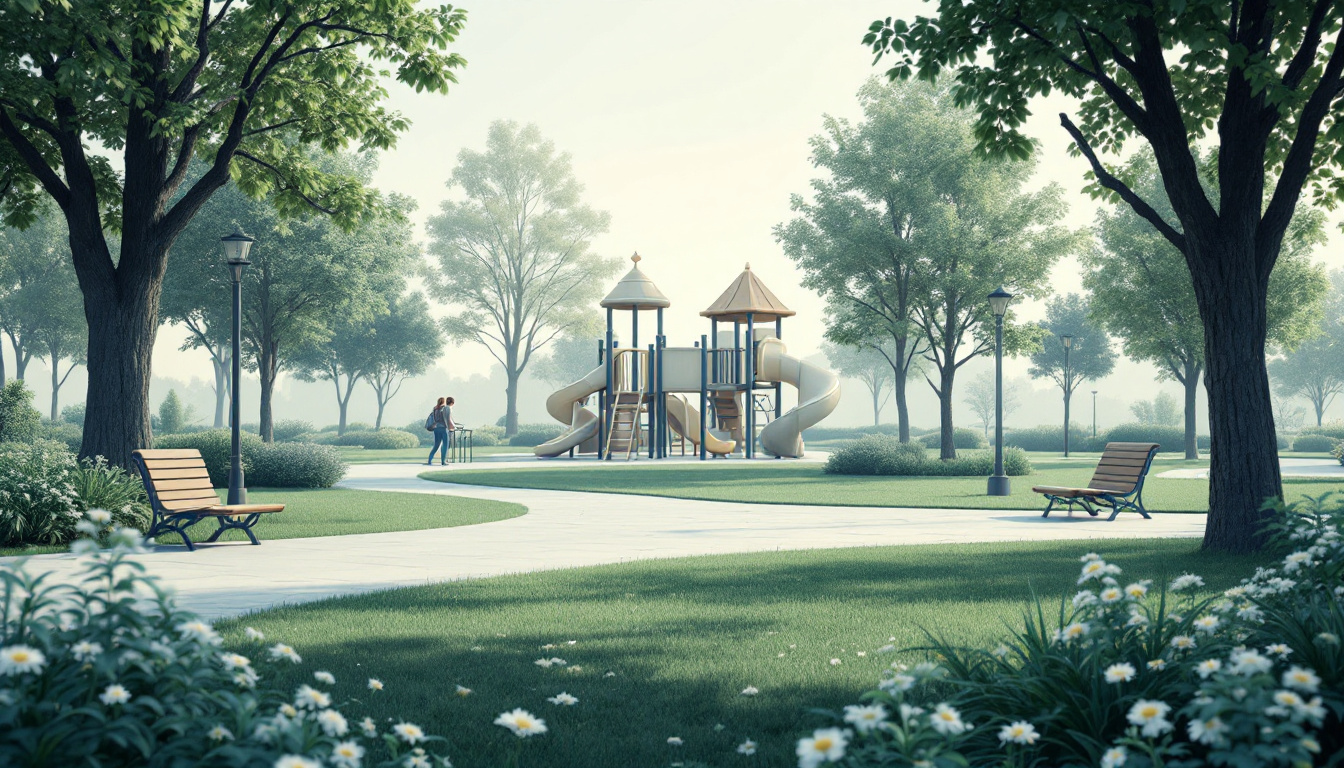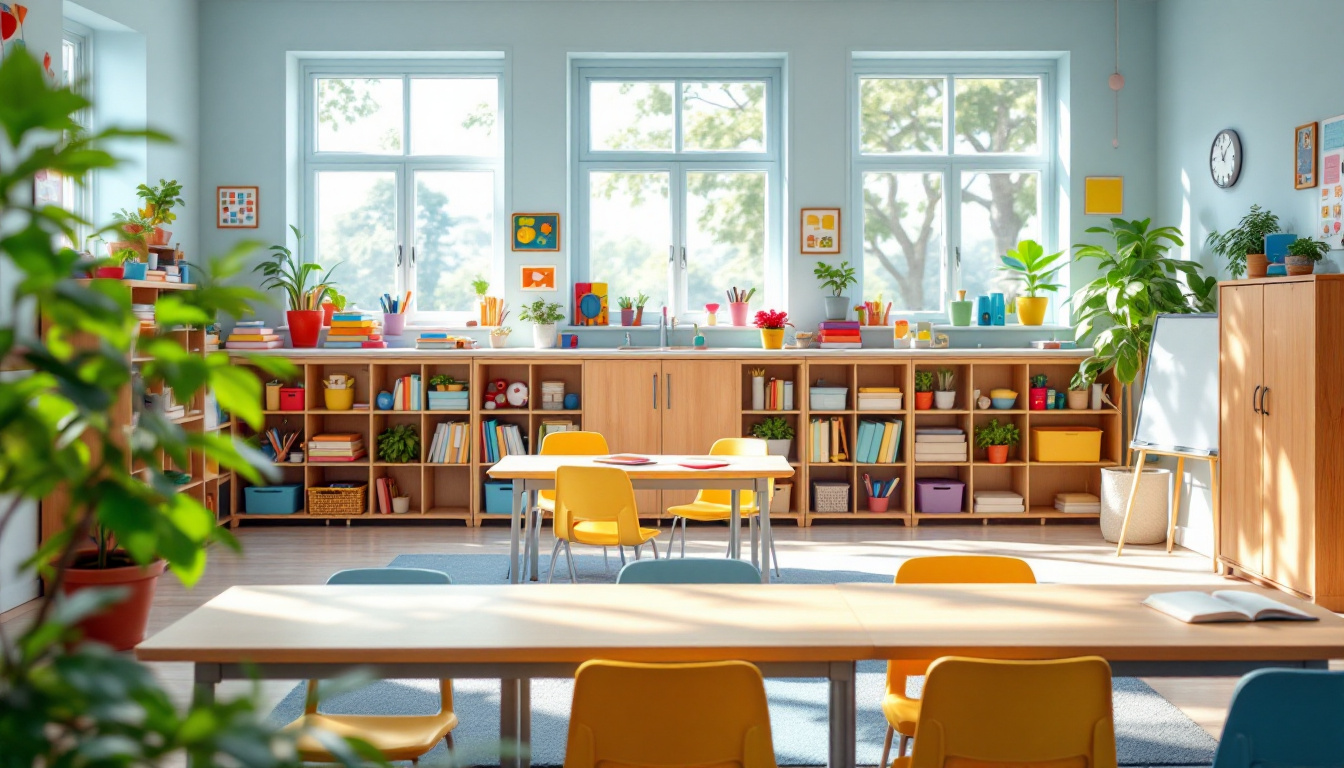How to Make the Most of Center-Based ABA Therapy Programs
Optimizing Your Child's Growth with Center-Based ABA Therapy


Maximizing Benefits in a Structured Environment
Center-based ABA therapy offers a comprehensive, engaging, and specialized setting to support children with autism spectrum disorder (ASD). To get the most out of these programs, understanding their structure, techniques employed, and how to actively participate can significantly enhance your child's developmental progress. This article explores the best practices, benefits, and strategies for parents and caregivers to optimize their child's experience and outcomes in center-based ABA therapy.
Understanding the Foundations of Center-Based ABA Therapy

What are the benefits of center-based ABA therapy?
Center-based ABA therapy provides children with autism a structured, engaging environment geared toward skill development. These centers are equipped with specialized tools, sensory equipment, and educational resources that facilitate learning in a safe setting.
Children have access to a variety of activities, including group social skills sessions, arts and crafts, movement breaks, and play-based learning. This diversity helps foster social interaction, communication, and daily living skills essential for independence.
A major advantage is the involvement of trained professionals, including Board-Certified Behavior Analysts (BCBAs) and Registered Behavior Technicians (RBTs). They develop personalized programs based on thorough assessments, ensuring interventions meet each child's individual needs.
Group activities like circle time, story sessions, and collaborative games promote peer interaction. Children learn to share, take turns, and recognize social cues in a natural yet guided environment.
Parent participation is also encouraged through training sessions, where families learn reinforcement strategies and communication techniques. This teamwork enhances the child's progress and helps generalize skills to home and community settings.
Overall, center-based ABA therapy combines a well-structured environment with tailored interventions to support meaningful development, socialization, and skill acquisition for children of all abilities.
What is the structure and environment of ABA centers?
Centers are designed to create a predictable, supportive atmosphere. Rooms are often divided into different zones for specific activities—such as quiet areas for calming, active zones for movement, and dedicated spaces for table work or social interactions.
These facilities utilize sensory integration equipment, educational materials, and technology-assisted learning tools to enhance engagement and facilitate diverse learning styles.
The staff-to-child ratio is typically high, often close to 1:1, providing personalized attention and safety.
Centers also prioritize smooth transitions between activities and structured routines to reduce anxiety and promote focus.
Key components like skill development and social skills
Integral to center-based ABA are activities aimed at multiple developmental domains. Skill-building focuses on communication, self-care, academic readiness, and social competence.
Group sessions foster peer modeling and cooperative play, which are crucial for social growth.
Social skills groups in the late afternoon and evening help children practice conversational skills, emotional regulation, and safety role-playing.
Role of trained professionals including BCBAs and RBTs
A multidisciplinary team leads therapy design and implementation. BCBAs oversee programs, conduct assessments using tools like VB-MAPP, and analyze behavioral data to tailor interventions.
RBTs implement daily activities under supervision, delivering one-on-one sessions that include language practice, behavior management, and leisure skills.
Regular data collection by technicians allows therapists to monitor progress, adjust programs, and ensure continuous improvement.
This team-based approach guarantees that each child's developmental goals are achieved systematically and effectively.
| Professionals | Responsibilities | Additional Details |
|---|---|---|
| BCBAs | Program design, assessment, supervision | Specific expertise in individualized plan development |
| RBTs | Daily therapy implementation | Trained to deliver specific intervention techniques |
| Therapists | Facilitate activities, support caregivers | Often include speech and occupational therapists |
Center-based ABA therapy integrates these features to provide a comprehensive, dynamic environment tailored to promote meaningful growth and social integration.
Key Components and Techniques in Center-Based ABA Programs

What strategies can be used to maximize the benefits of center-based ABA therapy programs?
Maximizing the effectiveness of center-based ABA therapy involves several deliberate strategies. Consistent participation and active engagement from the child are fundamental to achieving meaningful progress. The structured environment of an ABA center encourages focus and facilitates targeted interventions.
One crucial approach is leveraging the specialized tools and resources available, including sensory integration equipment, educational materials, and technology-assisted learning tools, which support diverse learning needs. The therapy team, composed of trained professionals like BCBAs and RBTs, collaborates to create and implement a tailored treatment plan aligned with each child's unique strengths and challenges.
Group activities such as circle time, arts and crafts, story time, and sensory play promote social skills like turn-taking, sharing, and initiating interactions. These activities not only foster social growth but also help in generalizing skills learned across different situations.
Regular monitoring through data collection enables the team to track progress objectively. This data is analyzed by a BCBA to make informed adjustments to the therapy plan, ensuring continuous improvement.
Parent involvement plays a vital role. Training sessions teach families reinforcement strategies, behavior management, and communication techniques, which helps reinforce skills at home and promotes consistency.
Furthermore, social skills groups in the late afternoons and evenings focus on practicing conversational skills, emotion regulation, and functional daily living, all of which bolster independence.
In summary, a combination of consistent attendance, tailored programs, social opportunities, thorough progress tracking, and active parent participation creates an optimal environment for children to develop essential skills through center-based ABA therapy.
Social Skills and Peer Interaction in the Center Environment

How can ABA therapy programs be effectively utilized to support a child's development?
ABA therapy programs are tailored to meet individual needs, focusing on skill-building across various domains such as communication, socialization, and independence. In a center-based setting, these programs often incorporate a variety of group activities designed to promote social skills and peer interactions.
Group activities like circle time, arts and crafts, sensory play, and movement breaks are integral to creating a dynamic, engaging environment. These activities not only foster learning but also provide natural opportunities for children to practice taking turns, sharing, and following rules.
Peer modeling and collaborative games are core components that encourage children to observe and imitate positive social behaviors. When children work together on art projects or participate in group storytelling, they learn to initiate conversations, share materials, and navigate social cues.
Building social and communication skills within these group settings is crucial for generalization to real-world scenarios. Children learn to initiate social interactions, respond to peers, and develop empathy through guided play and structured social skills groups.
Regularly, social skills groups in the late afternoons and evenings target conversational abilities, emotional regulation, and functional daily living skills. These sessions foster independence and help children better manage interactions outside the therapy environment.
Overall, center-based ABA therapy leverages group dynamics and carefully curated activities to enhance social competence. The combined efforts of trained professionals and peer interactions create a supportive space where children can thrive socially, paving the way for improved communication skills and greater confidence in social settings.
**More information on this topic can be found by searching for "Social skills development through peer groups and activities in ABA centers."
Role of Data Collection and Progress Assessment

What methods are used to collect data during ABA therapy sessions?
During ABA therapy sessions, trained technicians meticulously record data on the child's behaviors and skill development. This data collection includes noting the frequency, duration, and quality of specific behaviors, such as communication attempts, social interactions, and compliance with instructions. These observations are often recorded in real-time using structured data sheets or digital tools designed for ABA programs. Additionally, progress in areas like imitation, language, or self-help skills is tracked through targeted assessments and checklists.
How do Board-Certified Behavior Analysts (BCBAs) analyze this data?
The collected data is regularly reviewed by BCBAs to evaluate the child's progress. BCBAs analyze patterns and trends over time to determine the effectiveness of current interventions. Using visual methods like graphs and charts, they can clearly see improvements or identify areas needing additional focus. This ongoing analysis helps BCBAs make informed decisions about whether to modify, continue, or intensify specific components of the child's individualized treatment plan.
How is therapy adjusted based on the data?
Adjustments are made to therapy programs based on the insights gained from data analysis. If a child is not progressing as expected in a particular skill, the BCBA may recommend increasing reinforcement, altering prompting strategies, or introducing new targets. Conversely, if a behavior has been successfully reduced, the focus may shift to more advanced skills or generalization efforts. These modifications aim to optimize learning outcomes, ensuring interventions are tailored to the child's evolving needs.
Why is continuous progress monitoring important?
Regularly tracking progress through data collection allows for timely intervention adjustments. This responsiveness ensures that therapy remains effective and aligned with the child's development. Additionally, data supports transparent communication with parents and caregivers, helping them understand their child's progress and how they can support ongoing skill-building at home.
| Data Collection Method | Focus Area | Tools Used | Frequency |
|---|---|---|---|
| Real-time observation | Behaviors & skills | Digital data sheets, apps | During each session |
| Checklists & assessments | Developmental milestones | Standardized tools (e.g., VB-MAPP) | Periodically (monthly/quarterly) |
| Video recordings | Behavior analysis | Video software | As needed |
This structured approach ensures that therapy stays dynamic, evidence-based, and individualized, promoting meaningful improvements in every child's development.
Creating a Child-Friendly, Structured Environment
 Center-based ABA therapy centers are carefully designed to be welcoming spaces that promote learning and development for children of all abilities. These environments are equipped with a range of specialized tools and resources tailored to support each child's growth.
Center-based ABA therapy centers are carefully designed to be welcoming spaces that promote learning and development for children of all abilities. These environments are equipped with a range of specialized tools and resources tailored to support each child's growth.
One of the essential features of these centers is the use of sensory integration tools. These items include swings, weighted blankets, textured mats, and calming lights, which help children regulate their sensory experiences. Such tools are especially beneficial for children who have difficulty processing sensory information, enabling them to stay engaged and comfortable during therapy.
In addition to sensory equipment, educational materials and technology-assisted learning tools are widely used. Visual aids, interactive tablets, and educational software enhance engagement and reinforce skills like communication, social interaction, and academic concepts. These resources ensure that children receive a balanced and stimulating experience that adapts to their individual needs.
The overall design of these centers emphasizes safety, accessibility, and adaptability. Spaces are arranged to encourage free movement and social interaction, with designated areas for group activities, individual work, and sensory exploration. Such structured yet flexible settings help decrease anxiety and promote confidence and independence.
Creating an environment rich in these resources allows therapists to implement evidence-based practices effectively, fostering skill acquisition and emotional well-being. It also provides children with the opportunity to learn in a setting that feels safe, engaging, and supportive, laying a foundation for success in all areas of development.
Parental and Family Involvement in Center-Based ABA Therapy
How can parents and guardians support and enhance the effectiveness of ABA therapy?
Parents play a vital role in the success of ABA therapy by actively engaging in their child's treatment process. One of the primary ways they can support is through participation in parent training and education sessions provided by the therapy center. These sessions teach families about ABA principles, specific strategies used during therapy, and techniques for reinforcing skills at home.
Using reinforcement techniques consistently at home helps children internalize new behaviors and skills learned during therapy. For instance, parents can utilize positive reinforcement—such as praise, tokens, or preferred activities—to encourage desired behaviors, making these practices part of daily routines.
Supporting the generalization of skills across different settings is critical. Parents can create predictable routines and environments that mimic therapeutic activities, providing opportunities for their children to practice and apply skills in real-life situations.
Regular communication with therapists is essential. Parents should feel encouraged to ask questions, discuss progress, and share observations. This collaboration ensures that strategies are aligned and adapted as the child develops.
In addition, culturally responsive practices, including translation services or respecting family norms and values, foster trusting relationships and increase engagement. When families understand and feel comfortable with ABA techniques, they are more likely to implement them consistently, boosting overall treatment outcomes.
Ultimately, active involvement by families reinforces the child's learning and helps bridge therapy sessions with everyday life, promoting long-term progress.
Transitioning and Continuity of Care
How is support provided for smooth transitions between settings?
Center-based ABA therapy often involves careful planning and collaboration to ensure children transition smoothly between different environments, such as from home to a center or later to school. Centers develop individualized transition plans that prepare children gradually, often incorporating familiar routines, social stories, and visual supports. These measures help reduce anxiety and facilitate adaptation.
Centers also coordinate with families and other service providers to ensure consistency. This includes sharing progress reports and strategies so that the child's experience remains seamless across different settings. Visual schedules and social narratives are common tools used to prepare children for change.
How is ongoing family and professional collaboration maintained?
Ongoing communication between therapists, families, and educational teams is vital. Regular meetings, updates, and progress reports allow everyone involved to stay informed about the child's development and any adjustments needed.
Parent training sessions are integral, equipping families with the skills to reinforce learned behaviors at home and support generalization of skills. Family participation in therapy sessions and meetings fosters a collaborative environment and helps align goals.
How is long-term progress maintained?
Maintaining the gains achieved through ABA therapy involves continuous data collection and periodic assessments. A team of professionals, led by a BCBA, reviews progress regularly and modifies treatment plans as needed.
Transitioning out of intensive intervention is carefully managed by gradually reducing therapy hours at the appropriate pace, while continuing to monitor behavior and skills. Schools and community programs may also become involved to support ongoing development.
Centers often provide resources and strategies for families to sustain progress at home, ensuring that skills are retained, and behaviors are reinforced over time.
| Aspect | Approach | Tools Used | Goal |
|---|---|---|---|
| Transition Support | Individualized plans, visual supports, social stories | Visual schedules, social narratives | Minimize anxiety, promote adaptation |
| Family Collaboration | Regular meetings, parent training | Progress reports, coaching | Ensure consistency, empower caregivers |
| Progress Maintenance | Ongoing assessments, plan adjustments | Data analysis, skill generalization techniques | Sustain skills, support independence |
Conclusion: Making the Most of Center-Based ABA Programs
Center-based ABA therapy offers a comprehensive and structured environment designed to support children with autism and developmental challenges. It emphasizes personalized treatment plans developed through thorough assessments by trained professionals like BCBAs, aiming to improve communication, social skills, behavior, and daily living skills.
One of the most effective aspects of these programs is consistent data collection by therapists. This ongoing process helps monitor each child's progress and provides the information necessary to fine-tune interventions, ensuring the therapy remains responsive and effective.
Active participation from parents and caregivers plays a crucial role in maximizing outcomes. They are encouraged to observe sessions, learn reinforcement techniques, and implement strategies at home, creating a consistent learning environment across different settings.
Regular assessments and flexibility are vital. By analyzing data and observing behavioral changes, therapists can adjust programs to better meet individual needs, support sustained growth, and prepare children for real-world independence.
In conclusion, the combination of a structured setting, skilled professionals, tailored programs, and active family involvement creates a powerful foundation for children's development. Staying engaged, participating actively, and trusting the process of ongoing evaluation can significantly enhance the benefits of center-based ABA therapy.
For further insights, search terms like 'Summary of maximizing ABA therapy outcomes in centers' can provide additional guidance on optimizing therapy success.
Empowering Your Child with Effective Center-Based ABA Therapy
Maximizing the benefits of center-based ABA therapy involves active engagement from both professionals and parents, ongoing assessment, and a flexible approach tailored to each child's unique needs. By understanding the structure, techniques, and resources available within these programs, families can support their child's growth, enhance social skills, and promote independence. Regular communication with trained therapists, parental involvement, and commitment to consistent participation are vital. With strategic planning and collaborative effort, parents can ensure that their child receives the full benefits of this evidence-based approach, setting a strong foundation for lifelong development.
References
- Exploring Center-Based ABA Therapy for Your Child With Autism
- Top Benefits of Center-Based ABA Therapy: Guide for Parents
- Impact of Center-Based ABA Therapy Curriculum
- 15 Benefits of Center-Based ABA Therapy for Individuals
- Applied Behavior Analysis (ABA) | Autism Speaks
- School-Based and Center-Based ABA Programs
- How to Find the Best ABA Center - - Lighthouse Autism Center
Apply Now
At Grateful Care ABA, we are proud to offer the best ABA therapy services in Indiana. Armed with a team of skilled Board Certified Behavior Analysts (BCBAs), we bring years of experience to the table, making us the preferred provider for ABA therapy in our community.
Understanding that every child with ASD is unique and has unique goals and objectives, our ABA therapists carefully craft personalized ABA therapy plans that are tailored to meet the specific needs of each child. Whether your child needs help with reducing maladaptive behaviors, your child needs IEP support at school, you want your child to be self-sufficient at home, or something else, we use ABA therapy to work diligently toward specific goals. Together we can make a difference in your child’s life!
Contact us today to connect with an ABA therapist and learn more about ABA therapy solutions for your child.

.jpg)
.jpg)





.jpg)
.jpg)
.jpg)

.jpg)
.jpg)
.jpg)
.jpg)
.jpg)
.jpg)
.jpg)


















































































